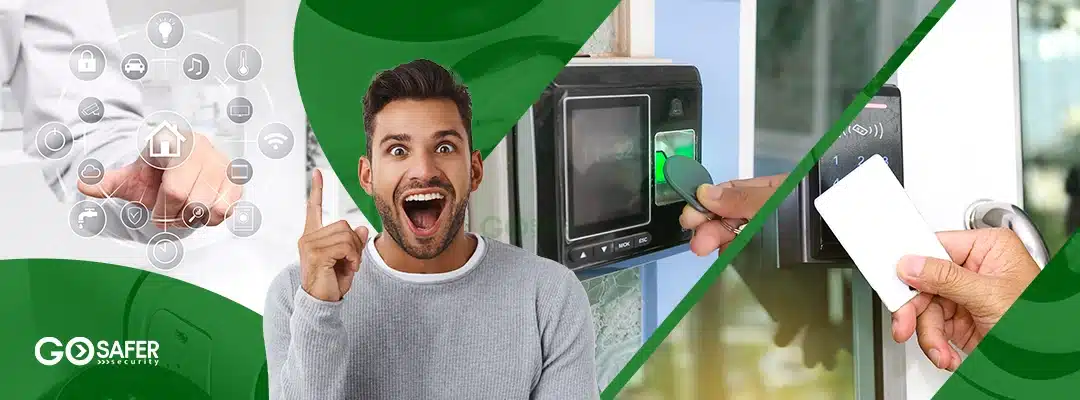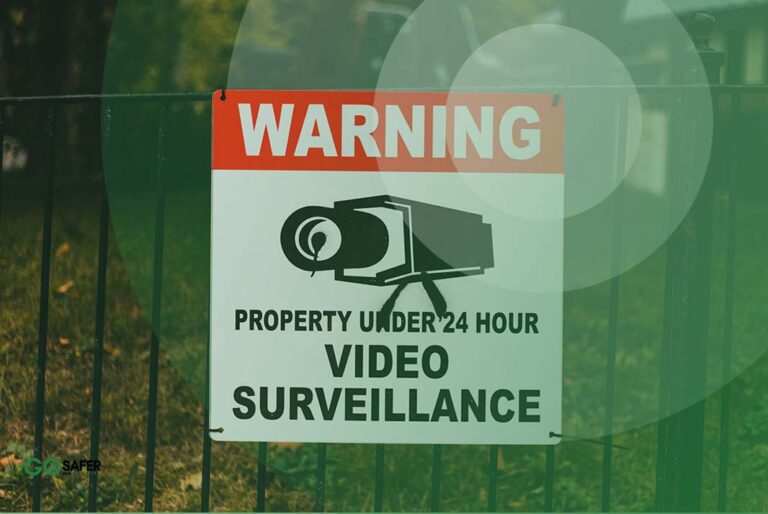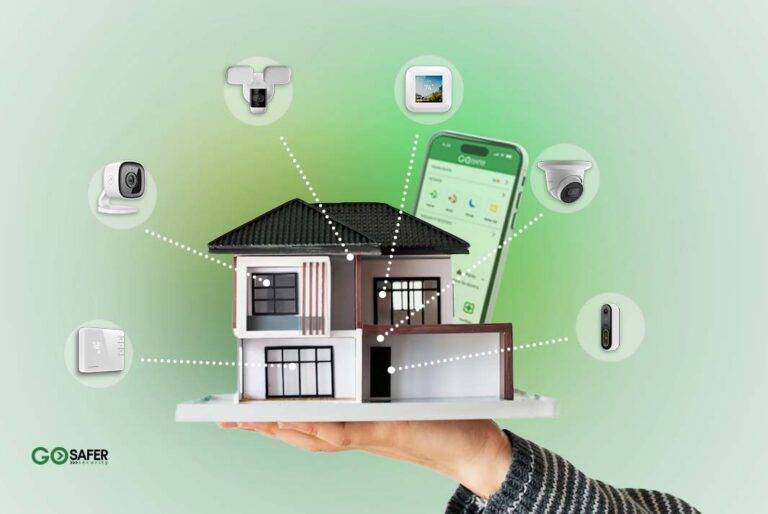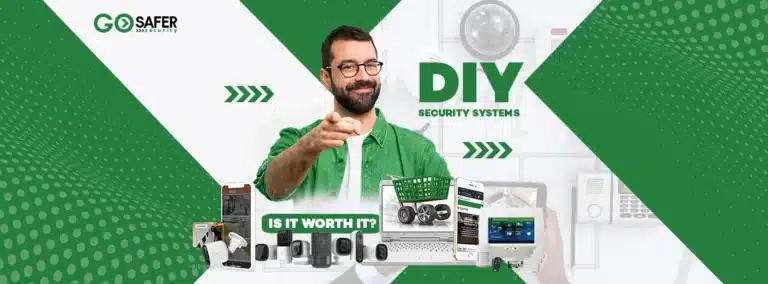We all want to feel secure in our homes, and the key card and fob home security system is one way to do just that. It combines the convenience of modern technology with the reliable security of traditional locks and keys.
In this blog, we’ll explore the key card and fob home security system, including how it works, what it offers, and what you need to know to make sure you’re getting the best system for your home.
We’ll also discuss the advantages and disadvantages of using a key card and fob home security system, and how to make sure you’re getting the most out of your investment. With this information, you can protect your home and keep your family safe and secure. (check also the beginners guide to home automation)
Table of Contents
ToggleThe Key Card and Fob Home Security System Solution: How it Works?
The key card home security system works similarly to the keyless entry solution, but instead of using a remote control, the key card security system uses a key card plugged into a port in the control panel.
If you choose to use right key card access control system, the keypad will look like a door like a normal keypad, except there’s no door handle. You’ll need to remove the key card each time you leave the room.
After inserting the key card, it will unlock the keypad, allowing access. The door will close behind you as you exit, and the lock will automatically lock, and there is no key in sight.
Security cameras are normally mounted high on the wall, so hardwired installation is the best option for security cameras and key card control panels.
A key fob solution is a little different.
A key fob is essentially a remote control for the home, giving users the ability to lock and unlock doors (similar function as biometric and face recognition system) or start their alarm system remotely.
As the door buzzer explained above, you’ll need to remove the key fob each time you leave the house.
This key fob can unlock the doors, but you’ll need to insert it again each time you walk into a room, at which point the door will lock behind you. You can also use this same key fob to start your alarm system for added security. ( visit our blog on fire alarm systems cost here)
Key Card Access Control Systems: Advantages and Disadvantages
Keys can be lost, stolen, or copied and can also be misplaced. As such, they do less to protect your home or business than you may think.
An access control system provides more security, much greater reliability, remote accessibility, and a whole host of other features. Read on to learn more.
Benefits of Access Control Systems
Access control systems minimize the risk of misuse: Keys can be lost or stolen, leaving you vulnerable. Access control systems deter unauthorized access with authentication and the ability to remotely lock and unlock doors.
Access control systems maximize coverage: Access control systems allow you to manage access to every entry point on your property from a centralized location.
Access control systems monitor the authorization of users: Access control systems keep a record of all door access, including names, times of entry, and who have allowed access. This makes it easy to ensure that unauthorized individuals do not have access to your property.
Access control systems can integrate into existing door hardware: Most access control systems use before-and-after photos to make sure only authorized individuals access your property.
Access control systems provide peace of mind: Access control systems provide increased security, as antitheft measures are in place; cameras monitor activity; and automated alarms alert you of unauthorized access.
Cost Benefits
Access control systems are significantly less expensive than alarm monitoring systems: Commercial security systems for small to medium size properties are between $300 and $500 per month (12 months).
Access control systems are significantly less expensive than traditional home security systems: Commercial home security systems cost between $300 and $500 per month (12 months). Access control systems offer more control over who is allowed access: With access control systems, you can control who has access to your property. You can also set up detailed permissions, such as who can enter certain areas at certain times.
Access control systems offer improved convenience:
Access control systems provide convenience by allowing employees to enter and exit without needing keys or a code. This eliminates the need to carry keys or memorize codes. Access control systems also provide convenience by allowing you to manage access remotely. You can easily add and remove access for employees or visitors from any location.
Access control systems offer improved security:
Access control systems offer increased security because they allow you to control who has access to your property. You can set up detailed permissions for areas within your property, giving you greater control over who can enter. You can also monitor and record access history, allowing you to detect any unauthorized access.
Additionally, access control systems offer improved physical security by eliminating the need to carry keys, which can be lost or stolen. Access control systems also reduce the risk of lock picking or tampering. Overall, access control systems provide convenience and improved security by allowing you to manage and control access to your property.
Drawbacks of Access Control Systems:
Cost
Access control systems can be expensive to install and maintain.
Complex Installation
Access control systems can be complex to install and configure, requiring specialized knowledge and tools.
Maintenance
Access control systems require regular maintenance to ensure that the system is functioning properly.
Limited Accessibility
Access control systems may not be accessible to those with physical disabilities, such as wheelchair users.
Security Breaches
Access control systems are vulnerable to hacking and other forms of unauthorized access.
How to Pick the Right Access Control System for Your Facility
When it comes to security, access control systems are the way to make sure the right people get where they need to go, and the wrong people don’t.
There are two types of access control systems:
Internal
Organizations like schools, stores, and churches use internal access control systems to control who gets in and out of their buildings and computers.
External
An external access control system is one that is used by organizations to control who can get onto their property. Typically this is for gated communities.
For multi-tenant buildings, access control systems can also be combined with other systems such as video surveillance and intercoms, for a complete view of building activity.
Now we are definitely security equipment experts, and we can definitely help you figure out what access control system is right for your facility. What’s most important about access control systems is that they prevent people from getting where they need to go, but they certainly don’t just prevent this.
They also track where people go, who moves about, and who stays still. They also help to mitigate liability from your organization. This is important because you never know what is going to happen in a building that gets a lot of foot traffic – injuries, fights, and even crime are rarely that far-fetched of an idea.
When it comes to choosing the best system, you should first have a checklist of your building’s specific requirements. From there, you match these up against what’s available on the market. It’s important to note that different access control systems have different features; some are more reliable than others, and some are more secure than others. It’s best to talk to a security expert, like ourselves, before choosing the right system for your needs.
What are the Different Types of Key Card and Fob Home Security Systems?
A key fob is a type of ten-key entry system that allows visitors to a home to access essential doors and key areas of the home that the homeowner has secured. These key cards can be issued either to a number of individuals (for an office building environment) or based on a unique barcode (for a home).
Ten-key entry systems generally involve key codes that are unique, or combination so that they are difficult to duplicate. Discover some of the primary types of key card and Fob Home Security Systems on the market:
Keyless Entry Systems
This is the most common type of key fob home security product and is largely utilized by homeowners (such as door locks, garage access, alarm system key fobs, etc.). Some of these key cards have special CR1750 batteries that will improve battery life to about three years.
Biometric Key Cards
Key cards that perform biometric authentication by scanning or reading a unique fingerprint ( see also the importance of biometrics to businesses) are currently on the rise and often utilized by financial institutions. These can range in price, but as a point of reference, the price for a biometric fingerprint scanner can run about $1500. The price difference is based on usability (the more features), and on that, they can start at about $200.
Dimmer Key Cards
Dimmer key cards can be useful in large buildings, especially offices. These key cards can be programmed so as to allow the usage of up to 50 light bulbs, allowing for great versatility.
Remote Keyless Entry System
This keyless entry system requires that an individual (or multiple individuals) push a button on a key fob at a designated location and that the device is within a certain range.
Skip-Code Key Card
A Skip-Code Key Card is a single-use device that only requires one individual to ‘punch’ or ‘cut’ the code into a specific location. These cards are typically used by apartment complexes and condominiums with key fobs that provide access to shared areas.
Smart Key Fob
A Smart Key Fob is another term for a proximity card or key card with a combination lock. These cards can be linked to a master key card, which allows the holder to access designated areas of a home.
Key Card and Fob Home Security System Cost
You’ll be able to purchase a key card and keyless fob home security system for around $120. This is usually enough for a single door and a single entry point. For those that want multiple entry points, however, that price point may go up a bit.
When considering home security, we suggest getting a key fob system for those doors you rarely use. The key fob systems are generally much cheaper. Plus, there are no door lock actuators, so less can go wrong.
Key card systems are great for main entry points. Just remember that many people like to steal keys, so make sure you have a proper plan in place if your key card is stolen.
Also, many modern smart locks are controlled using a fingerprint, so keep that in mind.
Key Card Credentials: Understanding the Basics of Key Card and Key Fob Systems Home Security Card Reader Systems
Perhaps you’re familiar with using a debit card to shop. Simply swipe, tap, or insert your card into the machine until it’s accepted, and your card works just like cash.
When it comes to smart lock security systems, a key card credential works in much the same way. Once your card is scanned, the door unlocks.
Key card credentials often lock automatically and unlock again when you scan your card, making it almost impossible to tamper, access the wrong password, or fall victim to forgery. Unlike keys, transponder key credentials don’t reveal passwords or keys.
In addition to key cards, there are also key fob credentials, which work in much the same way. Key fobs are small, portable devices that contain a transponder. When you press the button on the fob, it sends a signal to the lock, allowing you to open the door.
These types of systems are often used in businesses, or in multi-family residential buildings. Key fob door entry and key card entry systems provide a convenient and secure way to enter a building without the need for keys.
The benefits of key card and key fob systems include improved security and convenience, as well as cost savings. By eliminating the need for physical keys, businesses, and residential complexes can reduce the cost of replacing lost or stolen keys. Additionally, key cards and key fobs are easy to use and require little to no training. Finally, these systems provide an added layer of security, as it is much more difficult to duplicate a key card or fob than a physical key.
How to Install a Key Card Entry System or Key Fob Entry System
That old knob and deadbolt are easy pickings for the bad guys. With an old access card key system, you’ll prevent your home from being robbed.
Follow these steps on how to install an access card system in your home or business.
1. Start by contacting a reputable locksmith to install your key card system or key fob system.
2. The locksmith will measure and install the appropriate hardware.
3. After the hardware is installed, the locksmith will program the key cards or key fobs.
4. Finally, the locksmith will provide a list of operational instructions and a user guide for the system.
By installing a key card or key fob entry system, you’ll have peace of mind knowing that your home is protected from burglars and other intruders.
How to Protect Your Property with a Key Card or Fob Home Security System
Smart security provides you with the peace of mind that your home is being watched while you’re away.
You can set alerting options for any alarm that goes off in your home. When these systems are armed and any alarm sounds, you can receive a notification via text and/or email.
Some systems can even alert you when a garage is open, (check here if you want to know how to secure your garage door) the lawn gets mowed, or your child arrives home late. In each of these scenarios, the system will post an alert to your mobile.
There are other ways that you can monitor home security without relying on a monitoring team.
For example, a key fob brings simplicity in that you’re only using one secure key card. The key fob works much like a key, but with all the benefits of an internet-enabled security system.
The key fob is designed to be attached to your keychain or placed in a secure location. Whenever you enter or leave your home, you simply tap the key fob on the reader.
The system can be programmed with individual access levels. That way, you can control who has access to your home and when they have it.
You can also use cameras to monitor your home while you’re away. Cameras can be programmed to detect movement and record video. This way, you can keep an eye on your home and be alerted if anything suspicious happens.
How Smartphone Access Control Systems Enhance Door Access Security Solutions
Millions of American homes have installed or upgraded their entry doors as a solution to a higher level of security. Impressive new entrances to businesses and homes make the home look more beautiful while providing the peace of mind that enhanced security provides.
The most recommended entrances for improving home security are deadbolts. They provide additional protection by locking the door in place. According to the consummate Amazon marketplace, entry doors that have deadbolts are three times more protected from intruders than entry doors that feature regular locks.
But an additional security layer may be in order when a family is away from their home. Access control systems can address this issue by granting family members temporary access to the front door. Family and visitors will most likely find a system that includes both deadbolts and control systems to make sense.
But not all access control systems are equal. At least two systems offer features that help families increase security and simplify access.
First, the Spectrum Access system can be easily controlled through an iOS or Android app, and the unique and secure DoorSense sensor contributes to an-integrated home access solution that automatically works according to habits and schedules.
To set up temporary door access for family members, users simply create a persona and set an expiration time. The system automatically checks the credentials of anyone approaching the door lock and, if authorized, grants access. For times when family members are not around, users are capable of granting the housekeeper or gardener temporary access during the day.
Self-locking: Many locks offer the option to have all the locks in a home, such as entry doors and garage doors, lock automatically as people come and go from the house. This prevents uninvited guests from coming back later to possibly cause harm.
Locking automatically upon detecting an intrusion: Some systems allow the user to define an area in which the system should lock itself upon detecting a burglary or other type of intrusion. Other systems allow the user, upon receiving a call, to remotely lock all of the locks in a home or business.
Locking the door after it’s closed: Locks that keep the door closed after the user has locked it helps prevent anyone from having easy access to the home while the family is away.
Leaving the house without locking the door: Other intelligent door locks respond to the user’s phone or smartwatch to detect when the user is leaving the house, and then automatically lock the door. This prevents the user from accidentally leaving the door unlocked and allows them to be sure that their home is secure.
Smart locks also allow the user to quickly and easily grant access to others, such as family members, house cleaners, or other visitors, while still ensuring that the door is securely locked when the user is away. This is done by providing access codes that can be programmed to work for specific times and dates.
In the event of a burglary, smart locks can be programmed to detect unauthorized entry and alert the user.
For more information on how to make your home burglar-proof, check out our article on the top tips for home security.
Reinforcing the door frame: Reinforcing the door frame with metal plates can help make it more difficult for an intruder to break into a home. This can be done by installing metal plates on both sides of the door frame and securing them with strong screws.
The plates should be thick enough so that they cannot be easily bent or broken by an intruder. This is an effective way to make a home more secure and provide an extra layer of protection.
Key Card and Fob Security – How it Compares to Other Security Systems
Key cards, key fobs, and other forms of wearable security have become extremely popular alternatives to traditional security system tags, door keys, and window detectors.
The most common reasons to install key cards into your security system are convenience and accessibility. For instance, Android phone users can use their phones to unlock the main entrance door without even needing to push a button. There’s also a variety of key fobs with different functions depending on your budget and the specific security system you use.
One thing to keep in mind is that this type of system is typically not monitored by a central station. This means that in the event of a security breach, your security system is set up to automatically send notifications to your cell phone without alerting the monitoring center for immediate assistance.
When comparing key cards and fobs to other security systems, it’s important to remember that there are pros and cons to each. Key cards and fobs can be more cost-effective and more convenient than traditional systems, as they don’t require wiring or installation.
They also offer a higher level of access control and are easy to manage. However, key cards and fobs can be easily lost, stolen, or duplicated, which can lead to security breaches.
Also, if the system malfunctions, you may not be able to gain access. Overall, key cards and fobs are a great option for those who want a more convenient, cost-effective security system. As with any security system, it is important to weigh the pros and cons carefully before making a decision.
Key Card and Fob Security – Who Needs It?
There is something unique and cool about the kind of security that is usually reserved for those who had what’s called ‘back in the day’ or ‘early-2000’s.’ Traditionally, a security access card or a key fob was the primary way of granting access to a home. Whether it works with fingerprint recognition, voice recognition, or a simple swipe, it does a great job of simply authenticating individuals at designated times.
To be clear, you do have a lot of options these days when it comes to security systems. Even though key cards work great, there are all kinds of other security solutions out there, from unique door alarms to smart locks to smart security cameras.
That said, key cards and fobs are still a great option for those who want a more convenient, cost-effective security system.
Conclusion
Home security systems have come a long way over the years and the key card and fob system is one of the top options on the market. It provides a secure and reliable way to protect your home, and with Go Safer Security’s access control system installation service, you can rest assured that your home is safe and secure.
Go Safer Security’s experienced technicians are always available to answer your questions and help you get the security system you need. As your home security needs evolve, Go Safer Security can help you upgrade your system to meet all your needs.
Don’t wait to upgrade your home security. Contact Go Safer Security today and get the key card and fob home security system solution you need!







